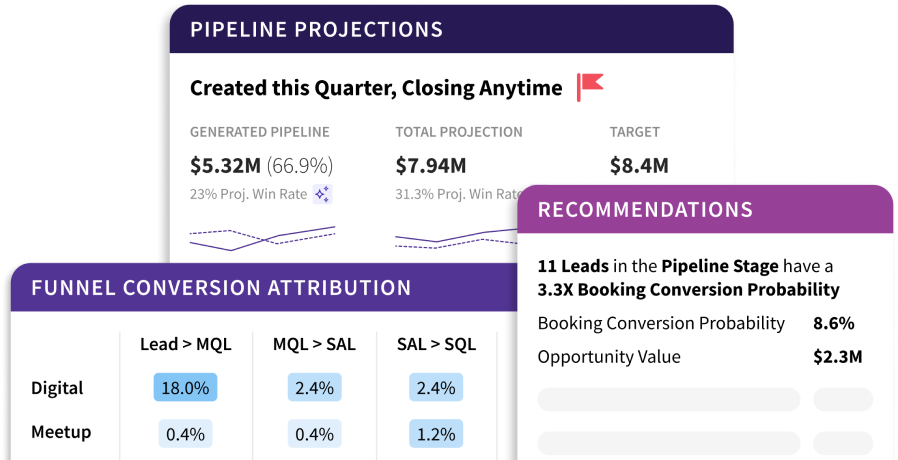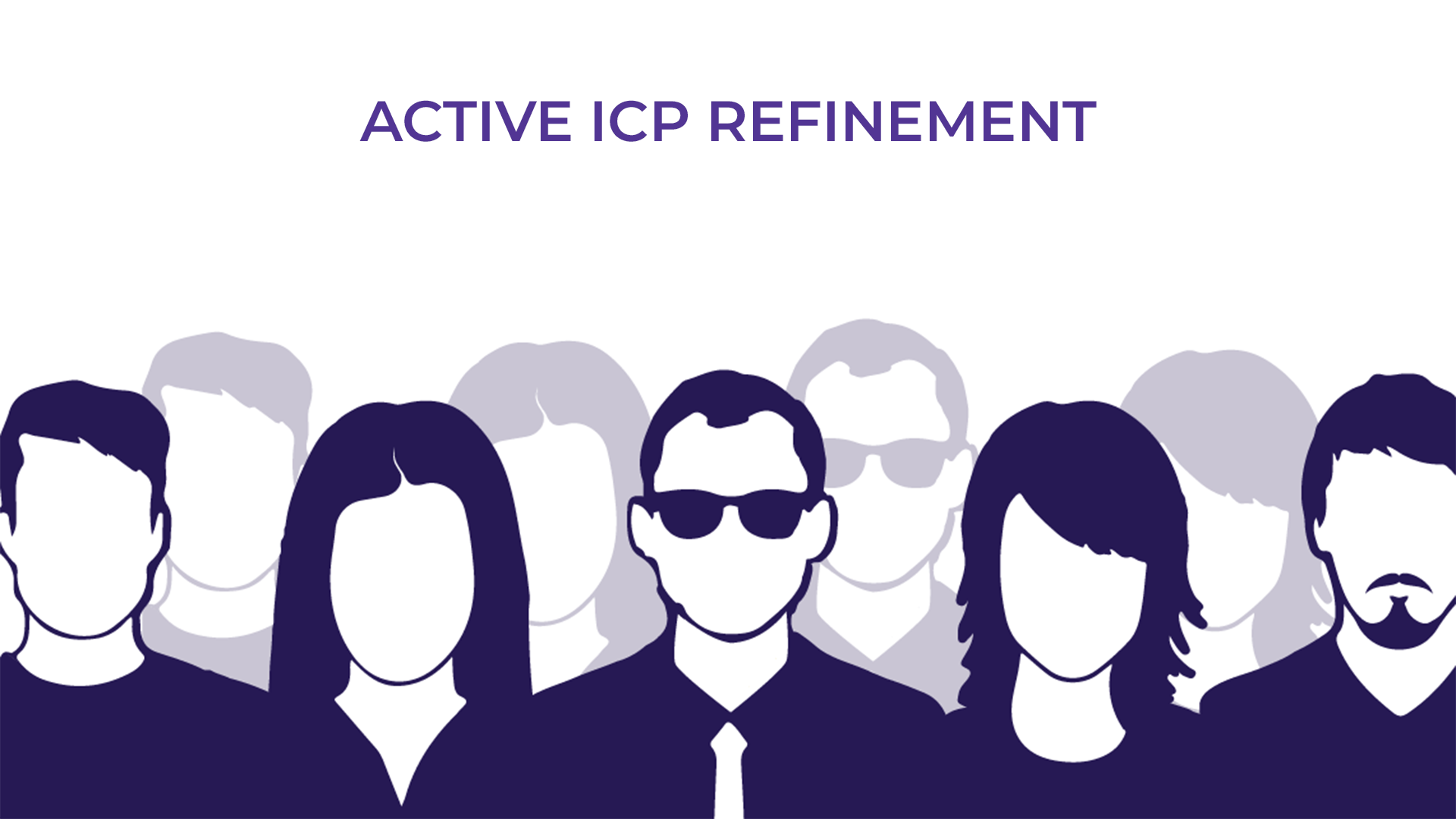
The Wall Street Journal startled the corporate world last month by saying out loud what is typically unspoken: “Chief executives say they understand what marketing chiefs do. Not all CMOs agree.”
The role of the CMO—and marketing in general—have become more complex. Yet a high-functioning GTM team is essential for companies seeking growth. The growing disconnect between CEOs and CMOs regarding the role and effectiveness of marketing has become an open secret.
A recent survey by McKinsey reveals that only 22% of CMOs agree that the role of marketing is clearly defined in their companies, a decline from 31% in 2019. This disconnect can be attributed to a number of factors, including communication issues, differing expectations, and a lack of understanding of the current marketing landscape.
New marketing and sales technology that leverages Artificial Intelligence (AI) can play a crucial role in bridging the gap between CEOs and CMOs and fostering better alignment.
5 Ways AI Can Bridge the Information Gap
Companies in every industry face a common quandary: how to store, sort, centralize, and analyze the mountains of data generated by business operations, especially marketing and sales.
AI is a clear solution to this challenge. Raw data, often unmanageable in its original form, is transformed into actionable intelligence through AI's processing capabilities. AI employs machine learning algorithms to sift through and organize large data sets, identifying correlations, anomalies, and trends.
This organized, distilled information can then become the basis for actionable insights for everyone in the C-Suite—everything from recommendations for new product features, adjustments to marketing strategies based on transparent performance metrics, or even operational changes based on customer feedback.
For CEOs and CMOs on opposite sides of the information gap, the benefits of AI are numerous.
Democratize Data
By unifying data lakes spread across systems, departments, and teams and providing access to a centralized data repository, AI can ensure that everyone in the organization, from CEOs to front-line employees, has access to the same information. This empowers every team to analyze data as needed to generate insights relevant to its specific initiatives.
Streamline Communication
AI not only democratizes data but also streamlines and improves communication across departments. By centralizing information, it eliminates the confusion caused by disparate data sources. AI tools also enable real-time sharing and collaboration, ensuring that both CEOs and CMOs are consistently informed about the same metrics and insights.
Provide New Levels of Insight
AI can analyze large amounts of data to identify patterns and trends that would be difficult to spot manually. This can help CEOs and CMOs to make better decisions about marketing strategies and investments.
Automate Analysis
AI can automate tasks such as data collection, analysis, and reporting, providing insights that were previously difficult to gain and freeing up time for CEOs and CMOs to focus on more strategic initiatives.
Improve Customer Understanding
AI can be used to collect and analyze customer data to develop deeper insights into customer behavior and preferences. This information can then be used to create more targeted and effective marketing campaigns.
Optimizing Marketing Performance with AI
Specifically for CMOs, AI’s capacity to analyze vast data sets enables the recognition of market trends, consumer behavior shifts, and accurate predictions of campaign performance.
AI's role in transforming raw data into actionable intelligence not only empowers CEOs and CMOs with more informed decision-making but also helps in developing strategies that are agile, customer-centric, and aligned with the dynamic market landscape.
Data-backed strategy gives CMOs the authority they need to pitch (or defend) marketing plans. CEOs and CMOs who leverage the new breed of AI-powered tools are more likely to find themselves on common ground.
Recognize Market Trends
AI algorithms excel at recognizing patterns in market data that might elude human analysis. For instance, AI can analyze sales data and identify seasonal trends, product preferences, or shifts in consumer behavior.
It can spot correlations between external factors (e.g., economic changes, social trends, or even weather patterns) and purchasing habits. By recognizing these trends, businesses can anticipate demand, adjust inventory, and tailor marketing strategies accordingly.
Understand Consumer Behavior Shifts
AI’s ability to process and analyze both structured and unstructured data, such as social media interactions, website clicks, or customer reviews, helps in understanding shifts in consumer behavior.
Natural Language Processing (NLP) algorithms, for instance, can interpret sentiment analysis from customer reviews, allowing companies to gauge evolving perceptions about their products or services. Image recognition algorithms can interpret visual cues, enabling businesses to understand how consumers engage with visual content.
Predict Campaign Performance
AI-driven predictive analytics can forecast the outcomes of marketing campaigns and identify leads that are the most likely to convert to customers.
By examining historical campaign data, AI can identify the factors that led to successful campaigns, predict the potential success of new strategies, and even suggest optimal budget allocation across various marketing channels.
It can simulate scenarios, predicting which campaigns are likely to yield the highest return on investment (ROI), thereby guiding CMOs and CEOs in making strategic decisions.
Make Decisions in Real-Time
AI's real-time processing and analysis enable faster decision-making. For instance, AI algorithms can sift through marketing data to report on revenue pipeline health and allow marketers to adjust strategies based on real-time analysis.
This agility allows marketers to optimize campaigns as they unfold, improving efficiency and ensuring campaigns align with the most current consumer trends.
Test and Iterate
AI algorithms facilitate A/B testing, enabling businesses to compare different versions of marketing content or strategies.
By analyzing the performance of these variants in real-time, AI helps identify the most effective approach, contributing to iterative improvements and more targeted campaigns.
Plan Long-Term Strategy
By amalgamating historical data and current trends, AI can aid in long-term strategy planning. It helps in identifying overarching shifts in consumer behavior and market dynamics, guiding CEOs and CMOs in devising strategies that are not just reactive but proactive, anticipating future market changes.
A New Breed of Tools and Applications
There is a vast array of AI tools that can support CEOs and CMOs in decision-making and strategy alignment. For example, revenue intelligence solutions such as RevSure provide a single source of truth for marketing and sales, democratizing data to ensure that everyone in the organization is on the same page.
RevSure’s marketing ROI and attribution solution helps marketers in every industry gain full-funnel insight into every lead source, campaign, and channel. Its AI-powered solutions give CMOs the key to decode the deep funnel and scale up their best-converting campaigns.
AI and the Human Element
While AI facilitates data-driven decisions, the human aspect is crucial. Experienced CEOs and CMOs who combine AI's capabilities with their expertise and intuition have the winning formula for growth.
In addition to using AI tools, CEOs and CMOs can also take steps to improve communication and collaboration. This includes:
Setting clear expectations: CEOs and CMOs should clearly define the role of marketing and what they expect from each other.
Meeting regularly: CEOs and CMOs should meet regularly to discuss revenue targets, marketing strategies, and results.
Being open to feedback: CEOs and CMOs should be open to feedback from each other and be willing to adapt their strategies accordingly.
AI serves as a crucial link between CEOs and CMOs in the evolving landscape of marketing and data-driven decision-making. By working together and using AI to their advantage, CEOs and CMOs can bridge the gap between them and achieve better alignment. This can lead to more effective marketing campaigns, improved customer satisfaction, and, ultimately, company growth.
Learn More
Download your copy of the annual State of Pipeline Generation Report to see how marketing leaders plan to hit their revenue targets in the year ahead.






